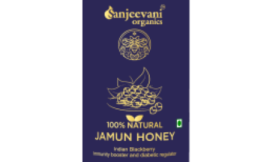
Introduction
Sweepstakes and contests are powerful promotional tools used by businesses to engage consumers, increase brand awareness, and foster customer loyalty. Sweepstakes are chance-based promotions where winners are selected randomly, requiring no skill from participants. Contests, on the other hand, are skill-based competitions where participants demonstrate their abilities or creativity to win prizes.
These marketing strategies hold significant importance for businesses. They can attract new customers, generate excitement around a brand, and collect valuable consumer information. By integrating these tactics, companies can enhance engagement levels and cultivate deeper connections with their target audience.
This article will explore the key differences between sweepstakes and contests, discussing their unique features and purposes. Additionally, we will examine the legal considerations that businesses must be aware of when running these promotions, ensuring compliance with relevant regulations. Furthermore, we will highlight the benefits that sweepstakes and contests can bring to marketing efforts, such as increased visibility and brand loyalty.
To provide practical insights, we will share tips for effectively implementing these strategies in your own campaigns. Finally, we will showcase real-life examples of successful sweepstakes and contests that have made a significant impact on brand growth.
Understanding the Difference Between Sweepstakes and Contests
When discussing sweepstakes vs contests, it’s crucial to understand their fundamental aspects. Both are promotional tools, yet they operate on different principles.
1. Contests
These are skill-based competitions requiring participants to showcase their abilities, creativity, or knowledge. Winners are selected based on merit, often judged by a panel or through public voting.
2. Sweepstakes
These are chance-based promotions where winners are chosen randomly. No skill is needed to participate, making entry simpler and often leading to higher participation rates.
Key Differences:
- Entry Methods:
- Contests: Require an effort such as submitting a photo, essay, or video.
- Sweepstakes: Typically involve filling out a form or performing minimal actions like liking a social media post.
- Winning Criteria:
- Contests: Judged based on specific criteria laid out in the rules.
- Sweepstakes: Winners are picked at random from all eligible entries.
Understanding these differences can help you choose the right promotion for your marketing goals.
Legal Considerations for Running Promotions Successfully
Understanding the legal requirements for sweepstakes and contests is crucial to ensure compliance and avoid potential legal pitfalls.
Essential Legal Elements to Include in Sweepstakes
Sweepstakes must comply with a variety of legal stipulations to maintain transparency and fairness:
- Official Rules: Clearly outline how participants can enter, the start and end dates, the method of winner selection, and any restrictions. This includes:
- Entry Methods: Specify if entries can be made online, via mail, or through other mediums.
- Eligibility Requirements: Define who can enter (e.g., age, location) to ensure only qualified participants take part.
- Prize Details: Detail the prizes being offered, including their value and how they will be awarded.
- Odds of Winning: Provide a clear statement about the odds of winning based on the number of entries received.
- No Purchase Necessary: It’s critical to state that no purchase is necessary to enter or win. This ensures the promotion isn’t classified as an illegal lottery.
- Disclosure Requirements: Inform participants about how their personal information will be used and stored.
Regulations Surrounding Contests
Contests also have specific legal requirements that must be adhered to:
- Judging Criteria: Clearly define how entries will be judged, including the criteria used and who the judges are. This ensures transparency in winner selection.
- Skill-Based Nature: Contests should be based on skill rather than chance. Outline what skills or talents are being assessed (e.g., creativity, knowledge).
- No Purchase Necessary: Similar to sweepstakes, it’s important to clarify that no purchase is necessary to participate. This prevents the contest from being considered a lottery.
By adhering to these legal guidelines, you can run promotions that not only engage your audience but also maintain legal integrity.
Benefits of Using Sweepstakes and Contests in Marketing Strategies
Sweepstakes and contests are powerful tools for building brand awareness through promotions. Engaging customers with these tactics can significantly boost your brand’s visibility. Here’s how:
1. Customer Engagement
By encouraging participants to engage with your brand, you create memorable experiences that foster loyalty. For example, a contest requiring user-generated content (UGC) can lead to deeper connections as participants invest time and creativity.
2. Marketing Strategy Integration
Integrating sweepstakes and contests into your marketing strategy allows for diverse promotional approaches. Contests can drive traffic to your social media platforms, while sweepstakes can increase website visits.
Utilizing sweepstakes for data collection is another major benefit. These promotions can effectively gather valuable consumer information:
- Email Lists: A well-executed sweepstake can grow your email list rapidly. By requiring participants to provide their email addresses, you ensure a steady flow of new leads for future marketing campaigns.
- Lead Generation: Collecting detailed consumer information through entry forms helps create comprehensive customer profiles. This data aids in tailoring marketing efforts to better meet the needs of your audience.
Both sweepstakes and contests offer unique advantages that can enhance brand visibility and consumer engagement, making them essential components of any robust marketing strategy.
Tips for Running Successful Promotions That Drive Results
Steps to Effectively Plan a Sweepstakes
To kickstart a successful sweepstake campaign, follow these essential steps:
- Setting Objectives: Define clear goals. Are you aiming to increase brand visibility, grow your email list, or boost sales? Clear objectives guide your campaign strategy.
- Choosing Prizes: Select prizes that resonate with your target audience. High-value or exclusive items generate more interest and participation.
- Drafting Rules: Ensure transparency by drafting comprehensive rules covering eligibility, entry methods, prize details, and deadlines.
- Promoting Your Sweepstakes: Utilize multiple channels such as social media, email marketing, and your website to maximize reach.
- Monitoring and Analyzing: Track entries and engagement metrics to measure the campaign’s success and gather actionable insights for future promotions.
Creative Entry Methods to Boost Participation in Contests
Engaging audiences in contests often requires creativity. Consider these methods:
- User-Generated Content (UGC): Encourage participants to submit photos, videos, or stories related to your brand. This not only boosts engagement but also provides valuable content you can repurpose.
- Quizzes and Trivia: Create fun quizzes relevant to your industry or brand. Participants enjoy testing their knowledge while engaging with your content.
- Social Media Challenges: Leverage platforms like Instagram or TikTok for viral challenges. Make it easy for users to join by using branded hashtags.
- Referral Entries: Offer additional entries when participants refer friends. This helps expand your reach organically.
By incorporating these strategies into the planning process for a successful sweepstake campaign and utilizing entry methods that work best for engaging audiences in contests, you can significantly enhance participation and achieve desired results.
Real-Life Examples of Effective Promotions That Made an Impact on Brands’ Growth Strategies
Case Studies of Successful Campaigns Using Giveaways as Promotional Tool
1. Coca-Cola’s ‘Share a Coke’ Sweepstakes
Coca-Cola ran a highly successful sweepstake campaign called “Share a Coke.” By personalizing bottles with common names and encouraging customers to share photos of their personalized bottles on social media, Coca-Cola achieved remarkable customer engagement. The campaign not only boosted sales but also increased social media interaction and brand visibility.
2. Lay’s ‘Do Us a Flavor’ Contest
Lay’s leveraged the power of user-generated content through its “Do Us a Flavor” contest, inviting consumers to submit new potato chip flavors. The contest generated massive participation, with thousands of entries and millions of votes, ultimately leading to increased brand loyalty and product innovation. The winning flavors were marketed widely, contributing significantly to sales growth.
3. McDonald’s Monopoly Game Sweepstakes
McDonald’s has been running its Monopoly Game Sweepstakes for years with great success. By offering customers game pieces with purchases that could potentially lead to winning prizes, McDonald’s effectively drove repeat purchases and increased customer retention. This promotion has become a staple in McDonald’s marketing strategy, consistently generating excitement and high participation rates.
4. Doritos ‘Crash the Super Bowl’ Contest
Doritos launched the “Crash the Super Bowl” contest, encouraging fans to create their own commercials for a chance to see them air during the Super Bowl. This contest not only generated high-quality user-generated content but also drove significant social media buzz and engagement. Some of the fan-made commercials became iconic, further enhancing Doritos’ brand image.
These examples showcase how both sweepstakes and contests can be powerful tools for achieving substantial business growth and enhancing customer engagement. Each campaign utilized strategic planning and creative execution to maximize impact, demonstrating the potential these promotional tools hold for brands aiming to elevate their presence in the market.
Conclusion: Embracing The Power Of Promotions In Your Marketing Strategy!
Using sweepstakes and contests can greatly improve your marketing efforts. These tools not only increase brand visibility but also create stronger customer engagement. By including these tactics in your campaigns, you can achieve impressive growth and build long-lasting relationships with your audience.
To recap:
- Sweepstakes are great for attracting new customers and collecting valuable data.
- Contests drive user-generated content and deepen brand loyalty through creative participation.
Final thoughts on effectively using both types within a marketing strategy:
- Define clear objectives.
- Comply with legal standards.
- Promote actively on social media.
Discover the potential of sweepstakes and contests in your upcoming marketing campaign. Begin planning now to enjoy the advantages of these powerful promotional tools!
This post was originally published on Sweepsadvantage.com.




